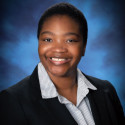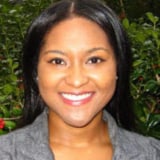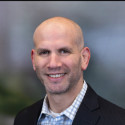In North Philadelphia, where I attended medical school, the majority of adults are functionally illiterate, reading at a 3rd or 4th grade level. This means that when it comes to their health, many patients struggle to read and understand the instructions they receive from their clinicians. To address the issue (and the health care disparities that follow), Philly offers a unique blend of institutional and civic aid founded on the premise that we must meet our neighbors exactly where they are: in the styling chair, in the church pews, on the reading mat, and everywhere in between.
One example of this ethos is the opening of a new women’s hospital campus in Northeast Philly — in which Black doulas and midwives are stepping into the spotlight to create a body of support for their patients, peers, friends, and family. Another example is how barbershops and beauty salons, often revered as safe havens for people of color, serve as hubs for mental health discussions, screenings, and services. And a third is how the Temple Family and Community Medicine department is soon shifting its site to a building right across the street from Zion Baptist Church — as the department is cognizant of how Black and brown churches and community centers in the area are leading the work of equity, dignity, and holistic care.
As a medical student observing these efforts from the sidelines, it seemed to me that health care professionals are only as successful as the community leaders and organizations that we are intimately involved with. But it wasn’t until I became the co-president of my school’s community service organization, Temple Emergency Action Corps (TEAC), that I learned just how true that really is. My co-president and I oversaw ~30-50 student volunteers who operated in our free weekly health clinic, led school presentations on health and wellness for young people, provided COVID-19 vaccines in immunization clinic, went abroad for medical missions in our Global Health arm, and more. Although I am always drawn to student activities positioned toward the community, it is safe to say that for the first month of my tenure, my mind was simply swimming in a deep sea of responsibility and wonder as to whether I would be able to rise to and meet the occasion.
One project in particular stirred up these feelings within me: the annual Community Health Fair. The Health Fair is one of our largest community-facing events, so as the lead coordinator, I was excited to begin the work of bringing Temple and North Philly together in the name of health. However, I quickly and happily realized that I was entering into an ecosystem of comradery and support that already existed long before my or Temple University’s arrival in enduring fashion through multiple epicenters, namely Black churches and community centers. During my outreach process to find vendors for the Fair, many of my contacts were eagerly awaiting their invitation and were instrumental in providing the guidance I needed to reach out to the community.
“Flyering tends to work best in our neighborhood. You need to knock on doors.”
“I have several listservs I’ll blast this to so we can spread the word.”
“Our clients and their families are long-time supporters of our center. I think they’d be happy to come support and gather resources.”
Between Mercy Family Center and Zion Baptist Church to our friends at the Black Doctors Consortium and Gun Lock Program, the support that I received from the community for the Community Health Fair was overwhelming, steadfast and thoughtful, in ways I hadn’t expected or imagined. Having the opportunity to witness the ways in which the community rallied around us motivated me to go even further in my advocacy and efforts to make this event and any other a success. It served as a catalyst to show up whenever and however the community needed me to, regardless of if it was a TEAC event or not.
As a longtime volunteer in Washington DC and Boston, and now Philly, I often describe service as an opportunity to partner with a community to help them meet whatever goals they’ve set for themselves. Yet, this experience taught me that service is much more — it is an opportunity to humbly offer yourself to the community as a new working piece of an already beautiful puzzle of progress.
What lessons have you learned from service? Share in the comments!
Najya A. Williams is a multidisciplinary artist, narrative medicine practitioner, and fourth-year medical student at the Lewis Katz School of Medicine. She is passionate about serving her community and intends to continue this work after graduation as a family medicine physician. You can learn more about Najya’s endeavors via her Instagram (@NajyaWilliams) and website (najyawilliams.com). Najya was a 2024–2025 Doximity Op-Med Fellow.
Image by Shutterstock







